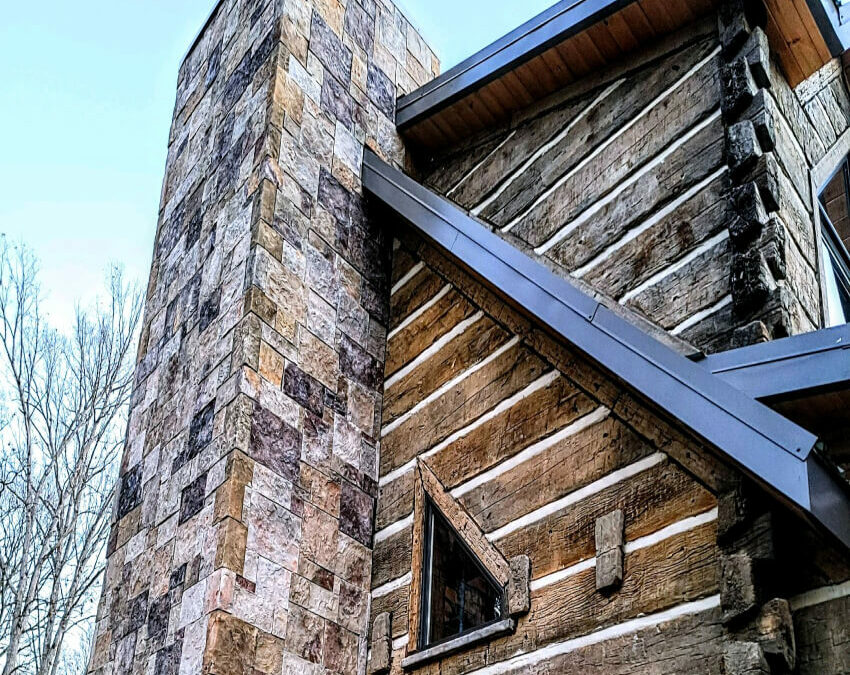Log cabins have a timeless charm that can provide a cozy and rustic retreat from the hustle and bustle of everyday life. However, constructing a log cabin requires careful consideration of the materials used. The right materials can ensure the durability and longevity of your log cabin, making it a worthwhile investment. In this article, we will explore the best log cabin building materials in Boone, North Carolina, and provide valuable insights into each aspect of log cabin construction.
Understanding the Basics of Log Cabin Construction
Before we delve into the specifics, let’s briefly discuss the basics of log cabin construction. Log cabins are typically built using interlocking logs that form the structure of the cabin. These logs serve both functional and aesthetic purposes, providing support while also creating a charming and rustic look. Understanding the key components of log cabin construction will help you make informed decisions about the materials you choose.
Log cabin construction is a time-honored tradition that dates back to ancient times. The use of interlocking logs not only creates a sturdy and durable structure but also allows for natural insulation, keeping the interior of the cabin cool in the summer and warm in the winter. This traditional building method has been passed down through generations, with modern advancements in materials and techniques enhancing the efficiency and sustainability of log cabin construction.
The Importance of Choosing the Right Materials
Selecting the right materials for your log cabin is crucial to its long-term durability. The harsh weather conditions in Boone, such as heavy snowfall and freezing temperatures, mean that the materials used must be able to withstand these challenges. Poor quality materials can lead to structural issues and increased maintenance costs over time.
One popular material choice for log cabins is Western Red Cedar, known for its natural resistance to decay and insects. This type of wood not only provides excellent durability but also adds a beautiful aesthetic to the cabin with its rich color and grain patterns. Additionally, metal roofing is often preferred for log cabins due to its durability and ability to shed snow easily, reducing the risk of roof damage during harsh winters.
Key Components of a Log Cabin
When considering log cabin materials, it’s essential to focus on the key components that make up the structure. These include the logs themselves, insulation materials, roofing options, and flooring choices. Each component plays a vital role in ensuring the overall integrity and comfort of your log cabin.
Insulation materials such as fiberglass or foam board are crucial for maintaining a comfortable temperature inside the cabin year-round. Proper insulation not only helps regulate the indoor climate but also reduces energy costs by minimizing heat loss. Additionally, choosing durable and low-maintenance flooring options like hardwood or laminate can enhance the longevity and visual appeal of your log cabin.
Exploring Different Types of Wood for Log Cabins
One of the most critical decisions when building a log cabin is choosing the right type of wood. Different wood types have distinct characteristics that can affect factors such as durability, insulation, and aesthetics. Let’s take a closer look at some popular wood types used in log cabin construction.
Characteristics of Popular Wood Types
When it comes to log cabins, certain wood types are favored for their exceptional qualities. Western Red Cedar, known for its natural resistance to decay and insects, is a popular choice. White Pine, with its light color and easy workability, is another common option. Other varieties like Douglas Fir and Spruce offer their own unique characteristics, allowing you to choose the wood that best suits your preferences and needs.
Pros and Cons of Various Wood Types
Each wood type has its advantages and disadvantages. For instance, while Western Red Cedar is highly durable, it can be more expensive than other options. White Pine, on the other hand, may require more maintenance but offers a more affordable alternative. Consider factors such as cost, durability, maintenance requirements, and aesthetics when making your decision.
Insulation Materials for Log Cabins
Proper insulation is essential to create a comfortable living environment in a log cabin. Boone’s varying temperatures throughout the year make it crucial to choose insulation materials that provide adequate thermal performance. Let’s explore the importance of insulation and evaluate different options for log cabins.
Importance of Proper Insulation
Proper insulation not only helps regulate the temperature within your log cabin but also helps reduce energy consumption and lower heating and cooling costs. It ensures that your log cabin remains comfortable regardless of the weather outside.
Evaluating Different Insulation Options
When it comes to insulation materials, there are various options available. Fiberglass insulation, for example, offers excellent thermal performance and is relatively affordable. Spray foam insulation provides superior insulation properties while also sealing gaps and reducing air leakage. It’s essential to consider factors such as cost, R-value, installation complexity, and environmental impact when selecting the right insulation for your log cabin.
Roofing Options for Log Cabins
The roof of your log cabin is another critical component that requires careful consideration. It not only provides protection from the elements but also adds to the overall aesthetic appeal. Let’s examine the factors to consider when choosing a roof and compare different roofing materials.
Factors to Consider When Choosing a Roof
When selecting a roof for your log cabin, you need to consider factors such as durability, maintenance requirements, weather resistance, and aesthetics. Boone’s heavy snowfall and high winds necessitate a roof that can withstand these challenges while also complementing the rustic charm of the cabin.
Comparing Different Roofing Materials
There is a wide range of roofing materials available for log cabins. Asphalt shingles are a popular and cost-effective choice, offering durability and a variety of colors. Metal roofing provides excellent longevity and is highly resistant to fire, wind, and impact damage. Slate and wood shake roofs offer a more traditional and aesthetically pleasing option, although they tend to be more expensive. Consider your budget, maintenance requirements, and desired aesthetic when making your roofing material selection.
Flooring Choices for Log Cabins
The flooring of your log cabin not only adds to the visual appeal but also contributes to the overall comfort and functionality. Let’s explore the different flooring materials available and how to select the right one for your log cabin.
Selecting the Right Flooring Material
When choosing a flooring material for your log cabin, consider factors such as durability, maintenance, and aesthetic appeal. Hardwood flooring, such as oak or hickory, is a popular choice due to its durability and timeless appearance. Engineered wood and laminate flooring offer a cost-effective alternative that mimics the look of hardwood. Stone and tile flooring provide a rustic charm and are highly durable, but they may require additional insulation underneath to retain heat.
Maintenance and Durability of Different Flooring Types
Each flooring material has its own maintenance and durability characteristics. Hardwood flooring requires periodic refinishing to maintain its appearance, while stone and tile floors are more resistant to wear and tear but may require sealing. Consider the level of maintenance you are willing to commit to and choose a flooring material that suits your lifestyle and log cabin usage.
By carefully considering the materials used in the construction of your log cabin, you can ensure its longevity and create a cozy haven that withstands the test of time. From the choice of logs to insulation materials, roofing options, and flooring choices, each decision contributes to the overall quality and comfort of your log cabin. Keep these factors in mind as you embark on your log cabin construction journey in Boone, North Carolina, and enjoy the rewards of a well-built and beautiful log cabin.
Discover the Smart Alternative with Smart Logs of the Carolinas
As you consider the best materials for your Boone log cabin, why not choose an option that combines traditional charm with modern innovation? Smart Logs of the Carolinas offers concrete logs that provide the authentic look of wood without the susceptibility to warping, settling, or rotting. Our environmentally friendly logs are not only simple to install but also boast superior resistance to insects, mold, and extreme temperatures, ensuring your cabin is low maintenance and cost-effective. Embrace the beauty of a log cabin that’s fire resistant, energy efficient, and designed to preserve natural resources. Ready to build your dream home with materials that are as smart as they are aesthetically pleasing? Contact Us! and let us help you make your vision a reality.

